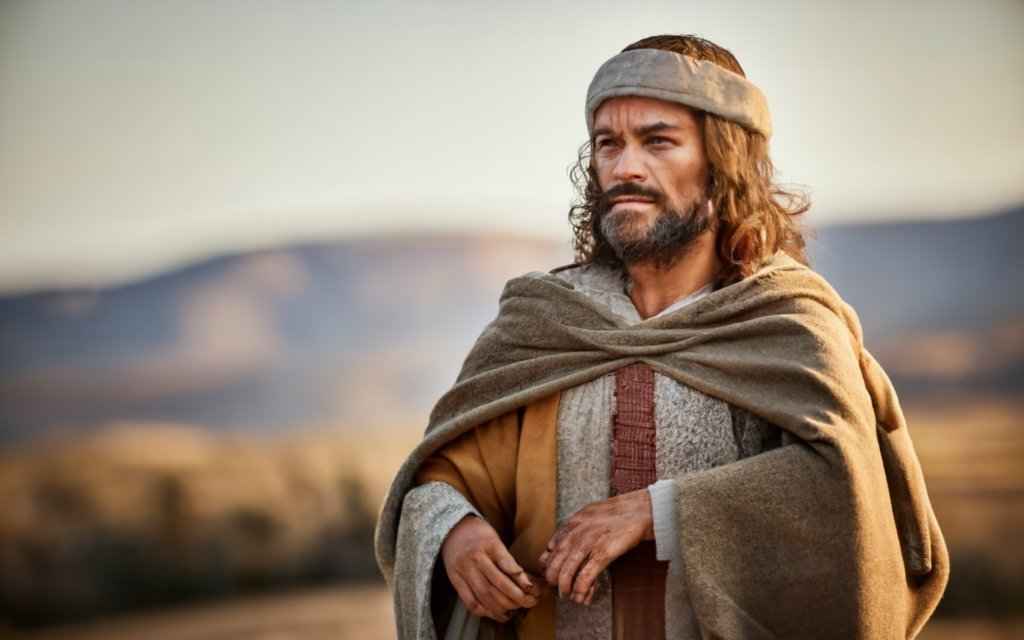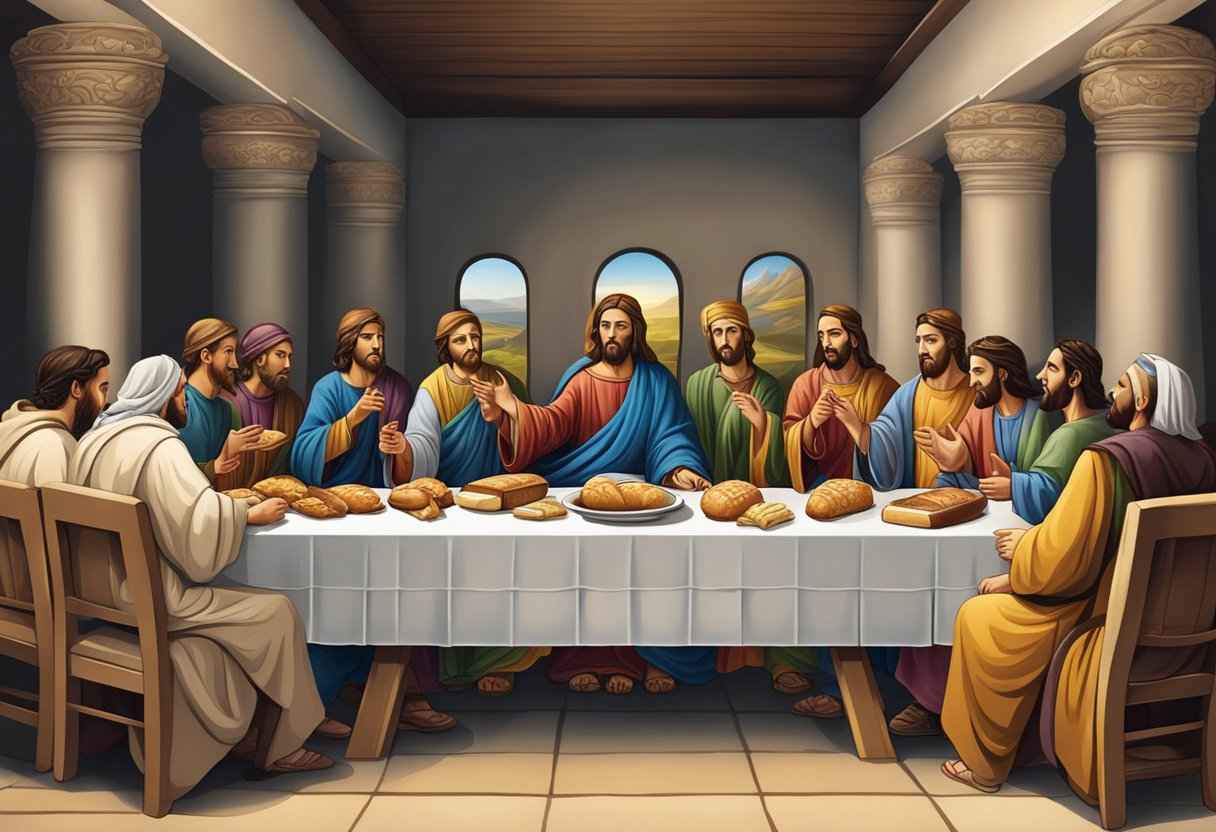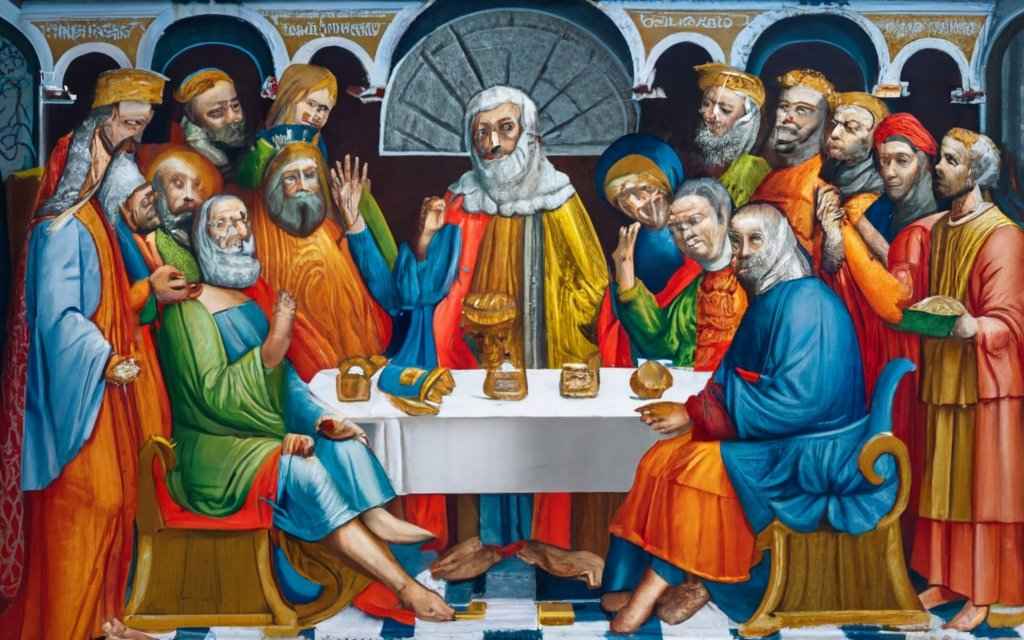The Council of Nicaea was a pivotal event in early Christian history. Held in 325 AD, it was the first effort to attain consensus in the church through an assembly representing all of Christendom. But did this famous council actually change the contents of the Bible?
The Purpose and Outcome of the Council of Nicaea
In 325 AD, the Roman Emperor Constantine I convened the First Council of Nicaea, the first ecumenical council of the Christian church. It took place in the city of Nicaea (now İznik, Turkey).
The primary purpose of the council was to address the controversial teachings of Arius, a priest who asserted that Jesus Christ was not divine but rather a created being. This became known as the Arian controversy.
The council ultimately rejected Arianism and produced the Nicene Creed, which affirmed Christ’s divinity and full participation in the godhead. The creed states in part:
“We believe in one Lord, Jesus Christ, the Son of God, begotten from the Father, only-begotten, that is, from the substance of the Father, God from God, light from light, true God from true God, begotten not made, of one Being with the Father.”
By affirming Jesus as “true God from true God,” the Council of Nicaea established the doctrine of the Trinity as orthodox Christian teaching.
However, the council made no changes whatsoever to the contents of the Bible. The development of the biblical canon was already nearing completion by this time.
The Biblical Canon before Nicaea
Although we have no records of the Council of Nicaea discussing the biblical canon, the canon of scripture was largely settled by the 4th century AD.
Here is a brief timeline:
- By 140 AD, early church father Marcion had proposed the first known canon of Christian scriptures, which included 10 letters of Paul and a version of the Gospel of Luke.
- The Muratorian Fragment, dated around 170 AD, listed 22 of the 27 books that would comprise the New Testament.
- Athanasius of Alexandria sent his Easter Letter in 367 AD which contained a list of the 27 books of the New Testament. This was the first exactly matching the modern New Testament canon.
- The Council of Rome in 382 AD and the Council of Hippo in 393 AD affirmed the same 27 New Testament books already in use.
So while the Council of Nicaea did much to shape Christian theology, it made no changes to the accepted books of the Bible. As church historian Lee McDonald states:
“Indeed, there is no record of any discussion of the canon at Nicaea at all. The development of the biblical canon was nearly complete by the time the assembled bishops at Nicaea addressed the more pressing doctrinal matters.” (The Formation of the Biblical Canon, pg. 282)
Also Read: Biblically Accurate Angels: Origins & Terrifying Depictions
The Rumor of Changes Made at Nicaea
Where did the myth originate that the Council of Nicaea changed the Bible?
The main source seems to be Voltaire, an 18th century French philosopher and skeptic. Voltaire helped popularize a story that the canon was determined at Nicaea by placing competing books on an altar and keeping those that did not fall off.
While this made for good theater, Voltaire’s tale is complete fiction. The church historians present at Nicaea, including Eusebius, wrote nothing about the biblical canon even being discussed.
Modern skepticism combined with misinformation continues to fuel the myth. As author Dan Brown wrote in his novel The Da Vinci Code:
“The Bible is a product of man, my dear. Not of God…more than eighty gospels were considered for the New Testament, and yet only a relative few were chosen for inclusion.”
This claim shows a poor understanding of how the biblical canon developed within the early church. The criteria used for assessing scriptural authority certainly involved human discernment, but not in the conspiratorial way imagined by Brown.
The Significance of Nicaea for Christianity
While it made no determination on scripture, the Council of Nicaea was deeply significant for several other reasons:
- It was the first major attempt to gain consensus among Christian bishops from around the known world.
- It set an important precedent for defining orthodox Christian belief through ecumenical councils.
- It recognized the importance of doctrinal unity within the church.
For these reasons, Nicaea endures as one of the most important events in ancient church history. Even if it had nothing to do with deciding the biblical canon.
Quick Answer: Did the Council of Nicaea Change the Bible?
In summary, the theory that the Council of Nicaea determined the contents of Scripture appears entirely unfounded. The New Testament we read today is unchanged from the collection of books already in use prior to 325 AD. While the council greatly shaped Christian theology, it made no alterations or redactions to the Bible itself.
More Misconceptions about the Council of Nicaea
There are some other common misconceptions about what happened at this important council. Let’s explore three more areas of confusion.
Misconception 1: The Council Established a Uniform Date for Easter
One popular narrative says that the Council of Nicaea decided on a uniform date for Easter at this time. However, this is not accurate.
The bishops at Nicaea attempted to establish a unified date for Easter celebration, but failed to reach consensus. The eastern and western parts of the church differed over whether Easter should fall on the 14th of Nisan per the biblical Passover or always on a Sunday. As church historian Justo Gonzalez concludes:
“Although a decision was taken, it was not universally accepted and the problem continued for centuries.” (The Story of Christianity, Vol. 1)
The Quartodeciman controversy over the celebration of Easter lingered for centuries after Nicaea. The definitive uniform date was not truly fixed until the Synod of Whitby in 664 AD.
Misconception 2: The Council Enforced Celibacy for Clergy
Another misconception is that church leaders mandated priestly celibacy at the Council of Nicaea. However, the historical records show this was again proposed but not enacted.
Celibacy was valued by some in the early church, following Paul’s suggestion in 1 Corinthians 7:8. Many bishops and priests remained celibate even prior to Nicaea. But the Council stopped short of making it mandatory, only proposing it as ideal.
Scholar Henry Chadwick explains:
“A canon was passed by the Council in an effort to make celibacy the rule for the clergy, but it failed to get ratification in the larger Church.” (The Early Church)
The effort to universally require celibacy would arise again but not be enforced until later church councils like the Second Lateran Council in 1139 AD. Once more, we find the Council of Nicaea’s rulings less far-reaching than often assumed.
Misconception 3: Constantine Controlled or Guided the Outcome
Since it was Emperor Constantine who convened the Council of Nicaea, some believe he must have dictated its decisions. However, the historical evidence does not support this.
Rather than commanding the agenda, Constantine allowed the bishops present to lead the proceedings. Accounts describe him deferring to the will of the majority, not imposing his own views.
The eminent historian Eusebius recorded Constantine telling the gathering of bishops:
“You are bishops whose jurisdiction is within the Church: I also am a bishop, ordained by God to overlook whatever is external to the Church.”
Constantine saw his role as dealing with external matters so the church could determine internal affairs. He did personally reject some of Arius’s views, but did not control the Council’s conclusions.
In the end, only two bishops out of 318 in attendance refused to sign the Nicene Creed. This indicates broad consensus rather than coercion. Constantine influenced but did not dictate the historic outcome.
Other Outcomes and Legacy
While we have dispelled some common myths, the Council of Nicaea did have many other important results, including:
- Establishing norms for the consecration and election of bishops
- Regulating the conduct of church clergy and prohibiting usury among them
- Addressing the re-admittance of lapsed Christians after persecution
- Affirming Rome as the western center of Christianity
The council also provided a model for future ecumenical gatherings that would help determine orthodoxy and resolve controversies. Seven more major ecumenical councils followed over the next millennium.
Above all, Nicaea endures as an expression of early Christian unity. Despite differences, bishops from east and west joined together to hammer out a consensus. As Theodoret recorded:
“It was a sight worth seeing and worthy of the celebrations of a festival, when so many bishops met, as our Savior says, ‘in his Name,’ with one mind, unanimous thought, and common judgment.”
The Council of Nicaea proved pivotal not in deciding scripture, but in strengthening the doctrinal and institutional unity of the early church at a critical time. Its legacy continues to shape Christianity over 1700 years later.
Sources and Citations
Gonzalez, Justo L. The Story of Christianity, Vol. 1: The Early Church to the Dawn of the Reformation. HarperOne, 2010.
Chadwick, Henry. The Early Church: The Story of Emergent Christianity from the Apostolic Age to the Dividing of the Ways Between the Greek East and the Latin West. Penguin Books, 1993.
Elowsky, Joel C., editor. We Believe in One Lord Jesus Christ. InterVarsity Press, 2013.
McDonald, Lee Martin. The Formation of the Biblical Canon: 2 Volumes. Bloomsbury, 2017.
[1] https://www.history.com/topics/ancient-rome/council-of-nicaea
[2] https://considerthegospel.org/2012/01/16/faq-on-constantines-impact/
[3] https://www.britannica.com/event/Council-of-Nicaea-Christianity-325
So in summary, while the Council of Nicaea had an enormous impact on early Christianity, it did not determine the contents of the Bible. As we have seen, common myths obscure what really transpired at this vital turning point in church history. Yet its theological and institutional legacy continue to shape the faith down to our present day.



















